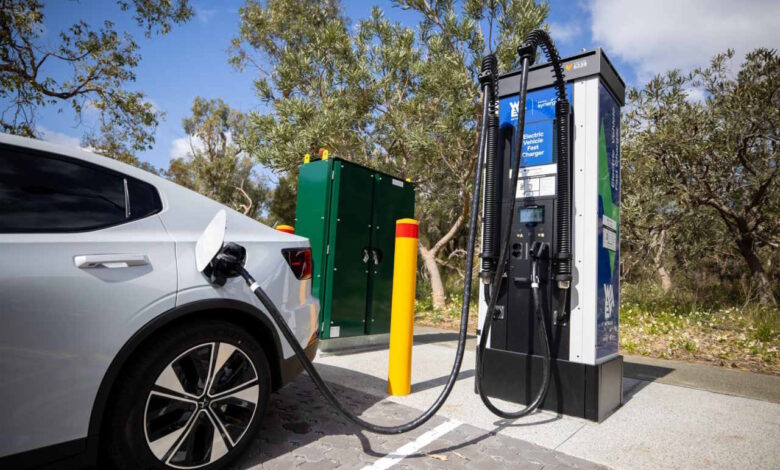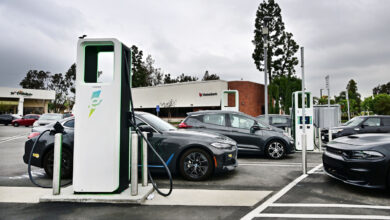Electric cars will make bigger impact on emissions than electric homes, study finds

Selling more fuel-efficient cars in Australia will have a bigger environmental impact than disconnecting all homes from gas, a report has found.
Analysis by the Climate Council, released on Wednesday, found Australia’s New Vehicle Efficiency Standard could cut carbon emissions from transport by 20 million tonnes in 2030, and by 80 million tonnes in 2035.
The figure comes despite compromises in the federal government’s proposal that will give automakers more generous emission allowances for commercial vehicles, such as utes, vans and large SUVs.
The fuel-efficiency standard is expected to be debated in parliament in the coming weeks and introduced in January 2025.
The Climate Council’s analysis compared projections from the Department of Transport with emissions from 5.1 million homes connected to gas.
It found the proposed vehicle emission cuts would save the same amount of carbon emissions as disconnecting all Australian homes from gas for more than two years.
By 2035, the study found, Australia’s fuel-efficiency rules would save the same amount of pollution produced by residential gas appliances over more than nine years.
Climate Council policy and advocacy head Jennifer Rayner said the figures showed how important it was for Australia to invest in more energy-efficient forms of transport.
“We can slash climate pollution from transport by cleaning up our cars,” she said.
“Capping the amount of climate pollution new cars produce is a long-overdue piece of the puzzle in giving Australians access to the same clean, efficient cars millions are already buying overseas.”
Energy Minister Chris Bowen and Transport Minister Catherine King launched the government’s final New Vehicle Efficiency Standard proposal late last month, revealing plans to cut emissions from new passenger vehicles by 60 per cent in 2029.
The government will introduce lower pollution cuts for light commercial vehicles, such as utes and vans, as well as some large SUVs, with a target of 50 per cent in 2029.
Penalties for exceeding annual targets set under the standard will not apply until July 2025.
Dr Rayner said the next step for the government to cut transport pollution in Australia should be greater investments in active transport options, including cycling and walking infrastructure.
“Australians deserve more transport options which get us from A to B in ways that benefit our hip pockets, health and environment,” she said.
“Shared and active transport is the next train off the platform for action to keep slashing climate pollution further and faster this decade.”
AAP



